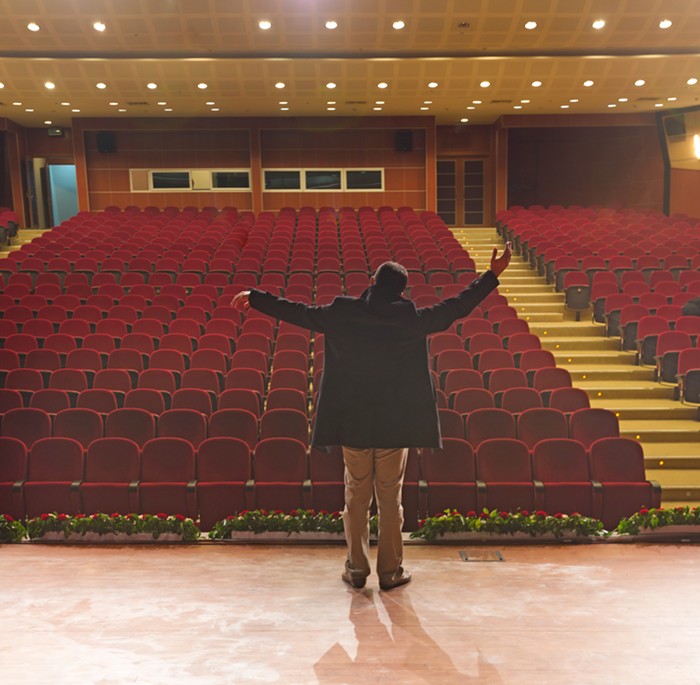
For those unaware, the world as it is today is not in a particularly good state. In many cases, it has fallen to the next generation to do all they can to make it better. Thankfully, even as it is often far too much to ask of them, they’re up to the challenge in ways that adults don’t give them credit for.
It is these youth that are the focus of the grounded documentary Homeroom, an on-the-ground look at the lives of students in the Oakland Unified School District (OUSD). Primarily, it focuses on students in the senior class of 2020 as they try to remove police from their schools.
Director Peter Nicks is revisiting familiar subject matter through a slightly different perspective. His previous film, 2017’s The Force, was a damning indictment of the failures of the Oakland Police Department to enact reforms after failing the community it served over and over. Nicks got incredible access to the department, which seemed to have mistakenly thought it would be a way to improve their image in the public eye. In reality, the unflinching documentary laid bare the department’s endemic flaws for all to see, culminating in the realization that it can’t be trusted to reform itself.
With Homeroom, Nicks builds upon this realization by looking at how a community no longer wants reform from departments—they just want them gone, and for the budget spent on police to go to better places to support students. However, the students and the community will have to face down stubborn opposition from a school board that is resistant to a wholesale removal of the police from schools.
While following the fight to remove a department from their schools, Nicks also creates a compassionate look at the students leading the way, such as Mica Smith-Dahl and Denilson Garibo. They are both student directors and serve on the school board as representatives of the 36,000 students. They never waste the opportunity, raising their voice when they need to set the record straight. By looking at their staunch commitment to the cause, the documentary also doubles as a character study. It follows their multiple attempts to enact change, fully embedding the audience with them in their fight.

What makes the approach to the subject matter so thoroughly invigorating is how Nicks portrays the youth and how they organize with a refreshing honesty. At no point does the director look down upon the students. Instead, he captures them with the highest degree of respect. What they are trying to do is not diminished. Rather, it is looked at with open eyes and ears. This regrettably rare approach ensures that their voices are always heard. Garibo in particular is given the center stage to give a rousing speech about the failures of the school board to adequately listen to their students, and Nicks lets it play out in full. Smith-Dahl also brings an important perspective and is given the proper room to do so.
With that being said, there are some moments where it feels like the other students are not fully realized or understood. Much of this is understandable, given the unexpected impact the COVID-19 pandemic has later on in the documentary. Students have frank conversations with each other about their futures and how they can work to support each other when no one else will. However, there are still moments where the full portrait of some of the students, many on the margins of the documentary, are lost. What they are feeling and thinking is left regrettably incomplete.
In fact, the documentary feels like it should have been a series that took its time, or at least expanded on some of the details of the specific situations that the students found themselves in. Obviously, it would be too much to expect something like a four hour long epic à la Frederick Wiseman's City Hall. However, the closest reference point that Homeroom has is to the more observational work of directors like Wiseman, and it would have benefited from letting moments breathe for longer.
Even with such hangups, the documentary still captures with an urgency and intensity the specifics of the moment in time the students are living through with a clear-eyed focus. When the protests over the murder of George Floyd come home to Oakland, the students go to the streets and increase the pressure on the powers that be to meet their demands. Their successes serve as a sign that perhaps some adults who seek to make change and radically rethink how policing in American ought to happen can find success too. It shows the prolonged work that is necessary to move the needle steadily in the right direction. The commitment to avoiding the talking heads in favor of the more focused approach to listening to those doing the work is what makes it so compassionate and compelling.

There is still a pain to the candid realities we get to hear, which Nicks makes abundantly clear. When Garibo speaks about the fears he has about police, as someone whose family is undocumented, it emphasizes how policy can have life-or-death consequences for those targeted by it. It reflects the gravity of the situation, and the need to critically look at whether further increasing the already omnipresent role of police in society will actually make anyone safer. In moments where you hear from those directly impacted, Homeroom cuts through all the noise to reveal the reality of policing in America. It shows how the police in schools are “more about keeping us in check than protecting us.”
There is a tragedy in seeing students, who are still only kids on the cusp of adulthood, have to speak up just to get this most basic of changes and recognition of their humanity. As they sit playing Uno at lunch while eating cups of noodles, the surveillance and policing they face is always lurking in the corners of the frame. To make matters worse, the coming pandemic ensures there is a pit in your stomach that these students, already facing so many obstacles, are all about to get hit by a train they didn’t see coming. When a Christmas tree is seen followed by a New Year’s celebration, the sense of impending pain only increases. They are excited for what 2020 is going to bring, only making the crash all the worse.
Yet, somehow, there is a prevailing joy that the documentary captures as a time capsule amidst all the chaos and uncertainty of the future. The youth of Oakland represent an optimistic outlook where they can go from discussing Trump’s impeachment to talking about a recipe to make Baby Yoda cookies. It is a bittersweet portrait of a community, ensuring Homeroom reveals all that these students have to offer. It creates a hope that is not built on false promises, but on seeing young people getting shit done.
You can see Homeroom in select theaters and on Hulu this Thursday, August 12.


















